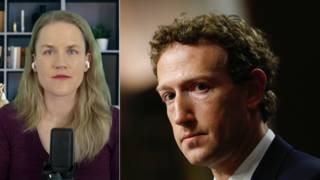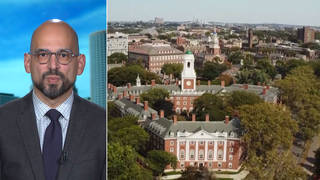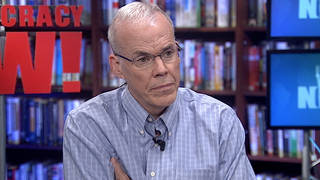
By Amy Goodman and Denis Moynihan
Humanity marks Earth Day’s 50th anniversary on a worldwide lockdown, as nature’s fury asserts itself through one of the smallest known particles of life, the novel coronavirus. Many argue viruses aren’t alive, relying on host organisms to replicate. Whether living or dead, the SARS-CoV-2 virus is driving us inexorably to a “new normal,” forcing us to adjust to its looming presence, at least until treatments and a vaccine become available. There are thousands of coronaviruses, though; defeat one, and another that jumps from bat or bird to human can smite us just as easily. As humans penetrate habitats of other species, decimating forests and other wildlands, zoonotic transmission–the transfer of a virus from animal to human — increases. The onrushing climate catastrophe promises unrelenting extreme weather events, more severe and frequent. This “new normal” demands that we radically realign our relationship with Nature, and that we do it now. Waiting fifty years is not an option.
Rebuilding will require containment of the COVID-19 pandemic. Global solidarity will be essential. “Stay at home, save a life,” is the prescription. But staying at home is a privilege. The life-saving practice of social distancing is out of reach to hundreds of millions of people.
Take India, for example, the world’s second most populous country. “Millions of workers and migrant workers are under a lockdown, which is supposed to enforce social distancing, but it only enforces physical compression,” Arundhati Roy, renowned writer and dissident, said on the Democracy Now! news hour recently. “People are crammed together. People are separated from their families. In many places, they have no food. They have no access to money even. They’ve sold their phones. You have the sense that you’re sitting on some kind of explosive substance.”
Key steps toward containment are testing, tracing, and isolation. Test kits that yield rapid results must be developed, mass produced, and distributed globally, then administered without cost. Those who may have been exposed must be traced, adhering to strict privacy and human rights standards. Finally, safe, humane isolation options must be provided for those infected, until they are well enough to rejoin their community.
Look no farther than the administration of President Donald Trump to see how wrong it all can go. Trump first denied the pandemic, then called it a hoax, then rolled out testing inexcusably slowly, compelling a jumble of federal, state, county and municipal jurisdictions to compete for tests and equipment while asserting U.S. supremacy during his hate-filled propagandistic pandemic anti-press briefings. He calls himself a “war-time president,” but failed to get healthcare providers the gear to wage battle. His delays and lies have caused the deaths of so many thousands of people.
Outbreaks occur from coast to coast, from meat packing plants, where workers have no choice but to show up for work in hazardous, potentially lethal conditions, to prisons and immigrant detention centers, where prisoners are denied early release, or even access to adequate soap, water, protective gear and safe distancing from others.
In the global south, the pandemic and climate disruption are a double-edged sword. “In Africa, people are saying, ‘If we don’t get killed by COVID-19, we’ll get killed by hunger,’” Kumi Naidoo, who formerly headed both Amnesty International and Greenpeace, said on Democracy Now! “Humanity must take a hard look at ourselves about whether we want to build back after corona exactly what we had, or build back a more equitable, more just and a more sustainable world.”
Arundhati Roy echoed those sentiments in a recent essay, writing, “Historically, pandemics have forced humans to break with the past and imagine their world anew. This one is no different. It is a portal, a gateway between one world and the next.”
Donald Trump has pledged U.S. taxpayer money to prop up failing fossil fuel industries like coal and oil. In response, author Naomi Klein tweeted, “Dems need to counter w/ a sweeping plan to cover the full salaries of fossil fuel workers while they retrain for the clean economy. Time to wind down this abusive industry that has always relied on massive public subsidies.”
On the first Earth Day, in 1970, over 20 million people in the United States — fully ten percent of the nation’s population at the time — rallied for an end to pollution, for an ecologically sustainable economy, for a greener future. “Our goal is not just an environment of clean air and water and scenic beauty,” Earth Day co-founder Sen. Gaylord Nelson of Wisconsin said that day. “The objective is an environment of decency, quality and mutual respect for all other human beings and all other living creatures.”
Fifty years later, with the planet’s climate on a human-caused precipice, the numbers demanding change are far greater, the organizing is global, but the time is short.












Media Options